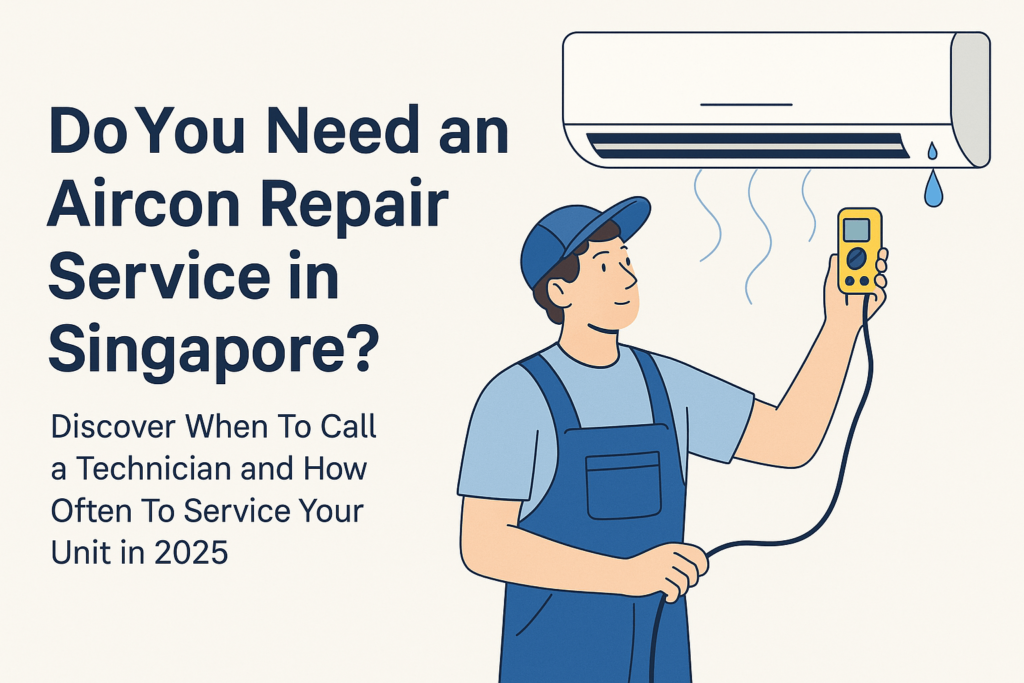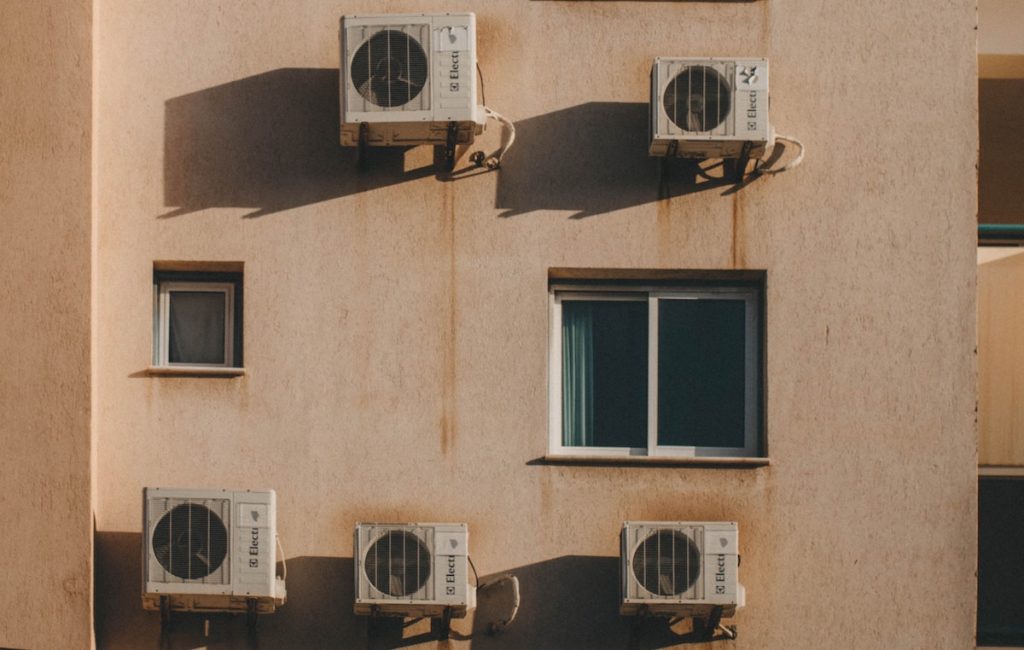Air-conditioning is already an essential component of everyone’s life these days, whether it is in offices, homes, or schools.
The hot and humid weather of Singapore calls for the use of air conditioners almost throughout the year to ensure a pleasant and cool atmosphere indoors. When we talk about air conditioners, their main component is the compressor.
The compressor is responsible for transferring the hot air from the inside of a room to the outside, absorbing heat, allowing for the refrigerant to flow, reducing humidity, and generally keeping the room cold. If the compressor becomes faulty, it can decrease the aircon efficiency and consequently, can even lead to the aircon being shut down.
In this article, we will describe the different types of aircon compressors and how each one works. If you have an understanding of how a compressor works, you will be in a better position to assess any compressor-related problem in your aircon and fix it accordingly.
Main Functions Of An Aircon Compressor
A compressor is the most important part of an aircon that determines how well the device will work. The compressor is responsible for several tasks which ensure the smooth working of the unit. The main functions of a compressor are listed below.
- A compressor is a machine that takes air at atmospheric pressure as input and delivers high-pressure air as output. responsible for heat transfer from inside the house to the outside. This transfer of energy takes place when the compressor pushes the hot air towards the condenser coil. The condenser will then make the air cold and blow it back. In the case of an inverter, the cold air from the room will be pushed to the condenser coils by the compressor where it will be heated and blown back
- The compressor is also responsible for turning the warm air into liquid by compressing it. This liquid is then passed through an expansion valve where it is turned into a cold liquid and absorbs more hot air from the room. As a result, cold air is blown back indoors.
- The compressor helps in absorbing heat from the room, and the refrigerant is evaporated because of the low pressure. Thus this transfer of heat from the room to the evaporating refrigerant helps in making the room cold.
- The compressor also helps in lowering the humidity. Reduce humidity level. The compressor It absorbs humidity from the hot air as well as the cold air when it is blown back into the room.
- The compressor also raises the pressure of the refrigerant to allow the refrigerant to flow freely in the evaporator coils and consequently aid in the process of cooling.
Helpful read: How to calculate aircon BTU
How Do I Check My Aircon Compressor?
To check your aircon compressor, follow these essential steps:
- Turn Off the Power
Ensure safety by switching off the power to your aircon unit before starting the inspection. - Inspect the Exterior and Wiring
Remove the faceplate and electrical access panel to check for visible damage, burns, or loose connections around the compressor. - Check Compressor Terminals
Locate the terminals on the sides of the compressor. Look for signs of burns or damage. Terminals are connected via wires and are critical for electrical functioning. - Test with a Multimeter
Use a multimeter set to the ohms setting to test the compressor terminals:- Normal Resistance: Readings between 1–30 ohms indicate proper function.
- Faulty Resistance: Readings above 30 or extremely low values suggest the compressor needs repair or replacement.
- Inspect Hoses and Valves
Examine hoses for leaks or breaks and ensure valves are functioning correctly. - Seek Professional Help if Needed
If you find severe damage or unusual readings, consult a professional technician to address the issue safely.
This process should take approximately 15–30 minutes if you have the necessary tools and basic understanding of your aircon unit. For more complex issues, professional assistance is recommended.
What Are The Symptoms Of A Broken Compressor?
Symptoms of a Broken Aircon Compressor:
- Power Switch Failure
The indoor unit works, but the condensing unit doesn’t. You may hear the fan running, but the compressor doesn’t start. - Warm Air Instead of Cool Air
The aircon blows warm air even when the condenser is functioning. This could mean the compressor isn’t pumping refrigerant effectively. - Unusual Noises
Loud or unusual noises, such as banging or buzzing, may indicate dislodged components or faulty electrical parts in the compressor. - Excessive Vibrations
The condensing unit shakes violently when turned on, often signaling the compressor is struggling to start and may soon fail completely. - Frequent Tripping of Circuit Breaker
A failing compressor may cause the aircon’s circuit breaker to trip repeatedly due to electrical overloads.
If you notice any of these signs, turn off your aircon and consult a professional aircon technician to prevent further damage.
Find Aircon Chemical Wash Services
What Are Some Common Causes Of Compressor Failure?
Common Causes of Compressor Failure:
- Inadequate Amounts of Refrigerant
Too much or too little refrigerant can strain the compressor, leading to failure. A refrigerant leak causes the compressor to overwork, trying to maintain cooling efficiency. - Dirty or Frozen Coils
Dirty condenser coils reduce heat dissipation, while frozen evaporator coils disrupt heat absorption. Both issues force the compressor to work harder than necessary, increasing the risk of failure. - Contamination
The compressor is designed to handle refrigerant in its gaseous state. Contaminants like oil leaks, moisture, dirt, or air particles can disrupt its function and cause damage over time. - Electrical Issues
Faulty wiring, voltage imbalances, or power surges can damage the compressor’s motor, leading to overheating or a complete breakdown. - Lack of Maintenance
Neglected maintenance, such as not cleaning coils or replacing filters, leads to accumulated strain on the compressor, reducing its lifespan.
Regular maintenance and prompt repairs are essential to prevent these common causes of compressor failure.
What Happens When An Aircon Compressor Goes Bad?
When an aircon compressor goes bad, you may notice the following symptoms:
- No Cool Air
A faulty compressor cannot circulate refrigerant properly, preventing the aircon from producing cool air. - Increased Humidity
The aircon will struggle to remove excess moisture from the air, making the room feel sticky and humid. - Frequent Circuit Breaker Trips
The compressor may overwork itself, drawing excessive power and causing the circuit breaker to trip repeatedly. - Unusual Noises
Grinding, rattling, or buzzing noises may indicate that the compressor’s internal components are failing. - Aircon Shuts Down
In severe cases, the aircon may stop functioning entirely if the compressor is no longer operable.
If you notice these symptoms, it’s crucial to turn off your aircon and consult a professional technician to avoid further damage.
Is It Worth Replacing An Aircon Compressor?
Yes, replacing an aircon compressor can be worth it in certain situations, but it depends on key factors:
- Age of the Aircon Unit
If your aircon is relatively new (under 5–7 years), replacing the compressor may be a cost-effective solution. However, for older systems, it may be better to invest in a new unit due to declining energy efficiency and higher operating costs. - Cost of Replacement
Replacing a compressor typically costs between $300 and $1,000, depending on the type and model. Compare this with the cost of a new air conditioner to determine if replacement is financially viable. - System Efficiency
Older aircons with faulty compressors are often less energy-efficient. Upgrading to a newer model can save money on electricity bills in the long term. - Extent of Damage
If the compressor failure has caused additional damage to other components, replacing the entire air conditioning system may be more practical.
Replacing an aircon compressor is worth it for newer units or if the repair cost is significantly lower than a new system. For older, less efficient aircons, upgrading to a modern unit is often a better investment. Consult a professional to assess the condition of your aircon before making a decision.
How long do Aircon Compressors last?
An aircon compressor typically lasts 12–15 years with proper maintenance. Regular cleaning of coils, ensuring adequate refrigerant levels, and scheduling routine servicing can help extend its lifespan. Overworking the compressor, such as by running the aircon for extended periods without breaks, may shorten its longevity.
By maintaining your aircon system and addressing issues promptly, you can keep the compressor running efficiently for its entire lifespan.
Types Of Aircon Compressors
As there are various models and variations of air conditioners, there are different types of compressors as well. Each works in a different way to achieve the goal of making a room cold. If your aircon is not cooling enough, you can find some answers here.
Before choosing one, you need to talk to different aircon installation experts before going ahead with the installation. That being said, let’s go through the five types of aircon compressors:
Reciprocating Compressor
The most common type of aircon compressor is the reciprocating compressor. These are typically found at smaller work sites such as garages and home construction projects. It comprises pistons, cylinders, and valves. An air-conditioner unit can have up to 8 cylinders within the compressor.
Each cylinder has a piston that moves up and down in a reciprocating manner. The working process of a reciprocating compressor is as follow:
- During the step of re-expansion, the piston moves down, creating a vacuum in the cylinder. As a result, the refrigerant is sucked into space. The pressure decreases, which causes the refrigerant to expand.
- In the next step of suction, the low pressure of the refrigerant causes the suction valve to open. As a result, suction gas is drawn into the compression chamber till the time the piston keeps moving downwards.
- The next step is that of compression in which the piston in the cylinder starts to move back upwards. The suction valve is closed, and the refrigerant is compressed in the tight space in the cylinder. Space keeps getting tighter, further compressing the refrigerant. This also increases the refrigerant pressure.
- As the refrigerant pressure increase, the process of discharge starts. The discharge valve is opened, the refrigerant is pushed out of the cylinder until the piston reaches its top point in the cylinder. At this point, the discharge valve closes, and the piston starts moving to do once again. This cycle then continues.
Scroll Compressor
Scroll compressors are a newer type of compressors that are being used in aircon units. Because of its lesser components, it is considered more reliable than a reciprocating compressor. It comprises two sets of coils. The working process of a scroll compressor is as follow:
- One of the two coils is fixed and stationary whereas the other coil vibrates or revolves at an axis. The fixed coil is called the scroll, and the other coil rotates over it.
- The moving scroll pushes the refrigerant towards the centre of the compressor where it is compressed.
- The compressed refrigerant is then discharged from the compressor, and the cycle continues.
- Scroll compressors do not have any discharge or suction valves and are, therefore, more reliable.
Helpful read: Aircon Leaking Water Problem And How To Fix It?
Rotary Compressor
Rotary compressors are becoming a popular choice in air conditioners because of their small size and the very little noise they make. It requires little maintenance. A rotary compressor comprises a cylindrical shaft with a roller attached to it. The working process of a rotary compressor is described below:
- In this compressor, there are suction and discharge lines at the top of the cylinder.
- As the roller rotates in the cylinder, it is blocking the discharge line at first. The refrigerant is thus able to enter the cylinder through the suction line.
- As the roller rotates, the suction line is blocked, and no more refrigerant can enter the chamber.
- The refrigerant pressure increases, and it starts to get compressed as the roller rotates.
- The increased refrigerant pressure opens up the discharge line during the rotation of the roller. The refrigerant, thus, leaves the compressor chamber through the discharge line as a high-pressure refrigerant vapour.
- The discharge line then closes, and the suction line opens, drawing more refrigerant into the compressor chamber, and this cycle continues.
Centrifugal Compressor
A centrifugal compressor is also called a radial compressor. It comprises a rotating impeller with radial blades, a diffuser, and a volute. This a type of dynamic compressor which works at constant pressures. The exact working of a centrifugal compressor is described below:
- The impeller starts rotating at full speed and draws in refrigerant air towards its centre.
- In the next step, the drawn-in air is pushed towards the centre of the compressor with a centrifugal force.
- The refrigerant gas is spun rapidly through the impeller, causing it to compress.
- The compressed gas is pushed out of the compressor through the same centrifugal force.
- More refrigerant gas is then drawn in once again, and the cycle continues.
- Centrifugal compressors are usually used in high-performance and large air conditioning systems.
Screw Compressor
Screw compressors are mainly used in air-conditioners which are used to cool large halls and rooms. They comprise two sets of rotors that rotate in opposite directions. The working process of a screw compressor is described below:
- The two rotors rotate in opposite directions. This opposing rotation causes the refrigerant gas to be drawn in between them.
- As the gas moves between them, space keeps on restricting, which causes the gas to compress.
- The compressed air is then dispersed through the unit.
- When the air is dispersed, the space increases, causing more air to be drawn inside and hence, the cycle continues.
- The screw compressor does not have any suction or discharge valve, so it is also considered more reliable than a reciprocating or a rotary compressor.
These are some of the common types of compressors that are used in air conditioners these days. Although the function of a compressor is the same in each type, the process of how they work varies.
If you know the working of your aircon compressor, you would better be able to take care of it and make sure that the aircon continues to work smoothly and efficiently. Compressors are important to keep your aircon cool and if that is not happening, you can find out more here. Furthermore, you can get to find out about air con BTU right below.
Helpful read: What Is Aircon BTU (And How To Use It To Choose an Aircon For A Specific Room)
How Do I Choose The Right Type of Aircon Compressor?
- Cooling Capacity
Select a compressor with the appropriate capacity for your aircon system. Larger cooling needs require a compressor with greater capacity to maintain efficiency. - Compressor Type
- Reciprocating Compressors: Affordable and suitable for smaller systems but noisier.
- Rotary Compressors: Quieter and more energy-efficient, ideal for residential use.
- Scroll Compressors: Highly efficient and durable, often used in high-performance systems.
- Energy Efficiency
Look for compressors with energy-saving features like variable-speed drives (VSD), which adjust output based on demand, reducing power consumption. - Location and Portability
For fixed installations, rotary and scroll compressors are preferred. For portable or compact systems, smaller units may be more practical. - Maintenance and Costs
Consider long-term costs, including maintenance and repair. Compressors with fewer moving parts, such as scroll compressors, often have lower maintenance needs.
By evaluating these factors, you can select a compressor that meets your cooling requirements, fits your budget, and operates efficiently.
| Compressor Type | Best For | Advantages | Disadvantages |
|---|---|---|---|
| Reciprocating Compressor | Small systems | Affordable, reliable | Noisier, higher energy use |
| Rotary Compressor | Residential and commercial use | Quiet, energy-efficient | More expensive than reciprocating |
| Scroll Compressor | High-performance systems | Durable, highly efficient | Higher upfront cost |
Homees.Co
Homees.co is your go-to platform to explore a wide range of reliable aircon services tailored to your needs. For service providers, joining Homees.co allows you to reach a broader audience and showcase your expertise. And be featured in our articles. Check out our other services, and join us to unlock endless possibilities for your home or business.
As Singapore’s go-to platform for home services, we make it easy for homeowners to find trusted, highly-rated vendors while providing professionals with a platform to grow their business.
Visit Homees.co today to book your next aircon servicing or to list your services and reach a broader audience!
- Check out our other services.
- Join us as a homeowner to unlock endless possibilities for your home.
- Join us as a merchant and stand a chance to be featured in our next article.
We’re here to improve your home
Speak to hundreds of reliable pros, view their gallery, inspirations, and know the best prices with our resources.
Have full control over your home improvement projects with Homees.




